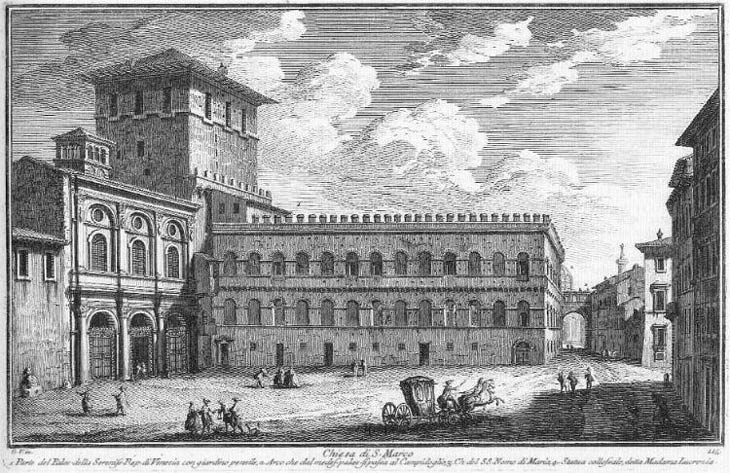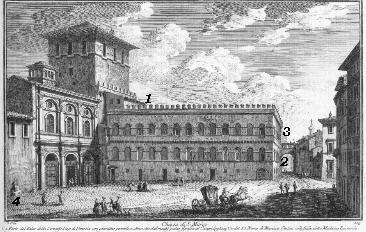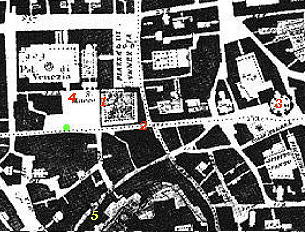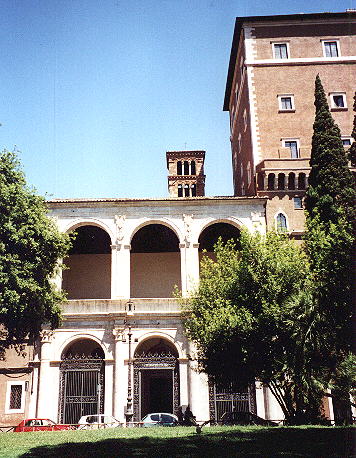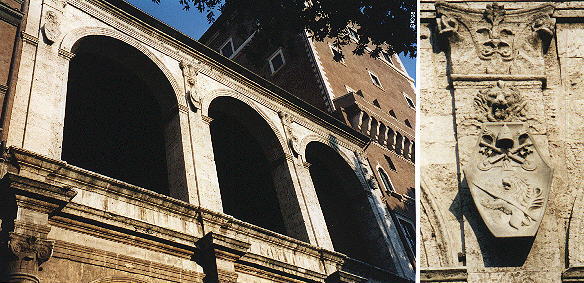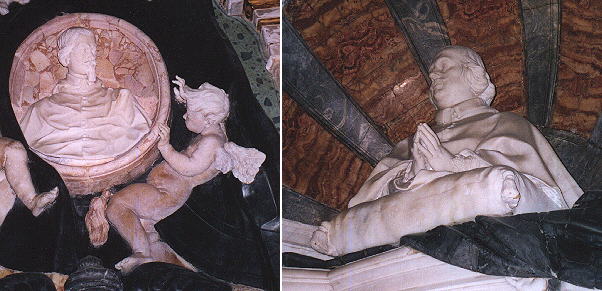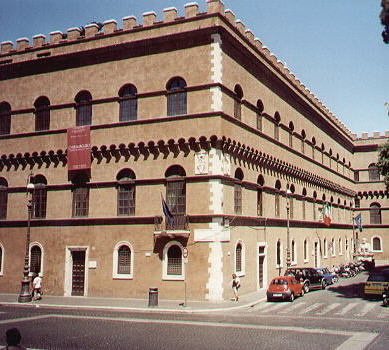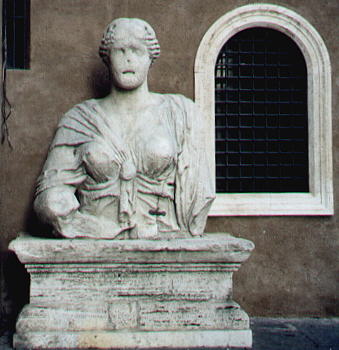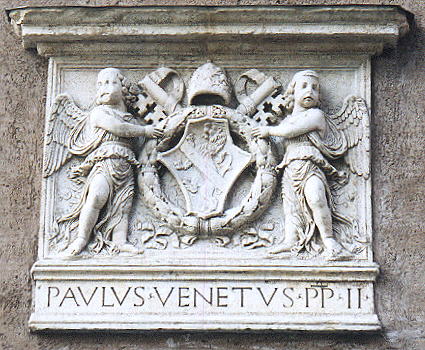  S. Marco (Book 6) (Day 3) (View C7) (Rione Pigna) In this page: The plate by Giuseppe Vasi Today's view S. Marco Palazzetto Venezia Coat of arms of Paulus II The Plate (No. 115)
The plate is dedicated to the church of S. Marco, but shows the so-called Palazzetto Venezia a building in the Florentine style separating Piazza Venezia from Piazza di S. Marco. The view is taken from the green dot in the small 1748 map here below. In the description below the plate Vasi made reference to: 1) Palazzetto Venezia; 2) Arch linking Palazzetto Venezia with Palazzo Campidoglio; 3) SS. Nome di Maria; 4) Madama Lucrezia. 2) and 3) are shown in detail in other pages.
The Palazzetto Venezia has been moved to allow the larger square which is in front of the Monument to Victor Emmanuel. This is one of the main changes in Central Rome. Piazza S. Marco has been significantly enlarged and the medieval houses which closed it destroyed, including the house of Pietro da Cortona, mentioned by Vasi in his guide of Rome. The Church
This very old church was adorned with a fine vestibule at the expense
of Cardinal Barbo, then Paulus II, who was Venetian. His coat of arms
both as a cardinal and as a pope is repeated in many places.
The lion of the coat of arms is also a main motif of the decoration.
The fine Renaissance loggia, which was used by Paulus II for blessing the crowd, was freed of later additions at the end of the XIXth century. S. Marco was the national church of the Venetian
community in Rome (click here for a
list of national churches in Rome). This explains why so many Venetian cardinals
are buried in S. Marco. Here below
two fine Baroque monuments: a) Monument to Cardinal Marcantonio Bragadin by Lazzaro Morelli; the cardinal had the same name
as his uncle who commanded the garrison in Famagusta, the last Venetian stronghold in Cyprus,
which fell in 1571 to the Turks (Marcantonio
Bragadin was flayed alive). The monument shows the influence of Bernini's Monument to Maria Raggi.
b) Monument to Cardinal Cristoforo Vidman by Cosimo Fancelli, one of the many monuments showing
the dead in the act of praying.
Palazzetto Venezia
Palazzetto Venezia is now to the left of the church, opposite to the previous position. Still at the same place is the statue of Madama Lucrezia, the mutilated marble bust of a colossal statue of a priestess of Isis. Like Pasquino and Marforio it was one of the talking statues of Rome (click here to learn more about Madama Lucrezia and the Talking Statues of Rome).
This is one of the nicest coats of arms of Rome. It clearly shows its Florentine style and anticipates
the coat of arms of Sixtus IV
in the Sistine Chapel.
Next plate in Book 6: SS. Venanzio e Ansovino Next step in Day 3 itinerary: Macel de' Corvi Last step in tour of Rione Pigna: S. Lucia dei Ginnasi  or to Book 6 or to
The Coats of Arms of the Popes or
to My Home Page on Baroque Rome or to
My Home Page on Rome in the footsteps of an XVIIIth century traveller or to Book 6 or to
The Coats of Arms of the Popes or
to My Home Page on Baroque Rome or to
My Home Page on Rome in the footsteps of an XVIIIth century traveller
|
All images © 1999 - 2003 by Roberto Piperno. Write to romapip@quipo.it
